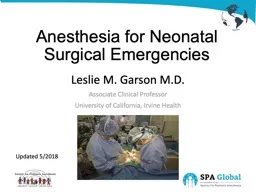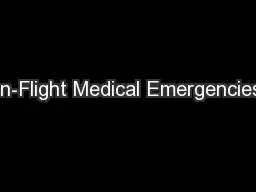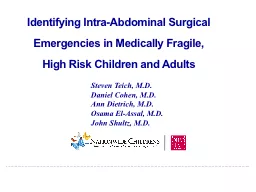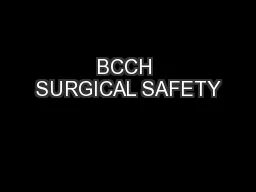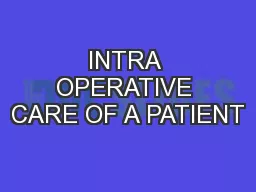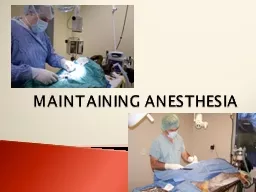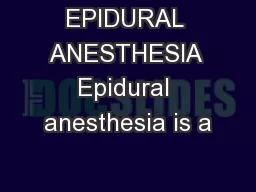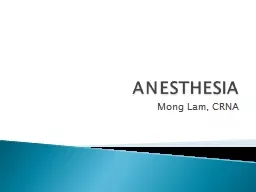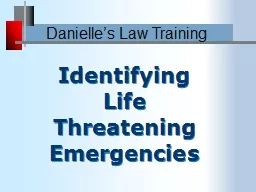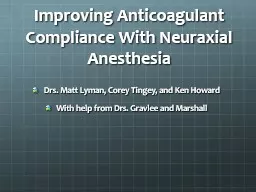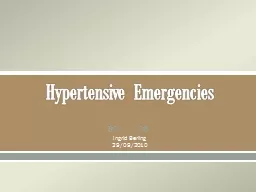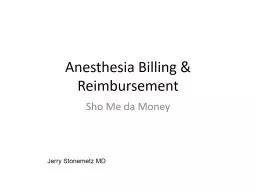PPT-Anesthesia for Neonatal Surgical Emergencies
Author : olivia | Published Date : 2022-06-08
Leslie M Garson MD Associate Clinical Professor University of California Irvine Health Updated 52018 Newborn Anatomy The Airway httpswwwdvidshubnetimage1880421continuingpromise2015
Presentation Embed Code
Download Presentation
Download Presentation The PPT/PDF document "Anesthesia for Neonatal Surgical Emergen..." is the property of its rightful owner. Permission is granted to download and print the materials on this website for personal, non-commercial use only, and to display it on your personal computer provided you do not modify the materials and that you retain all copyright notices contained in the materials. By downloading content from our website, you accept the terms of this agreement.
Anesthesia for Neonatal Surgical Emergencies: Transcript
Download Rules Of Document
"Anesthesia for Neonatal Surgical Emergencies"The content belongs to its owner. You may download and print it for personal use, without modification, and keep all copyright notices. By downloading, you agree to these terms.
Related Documents

